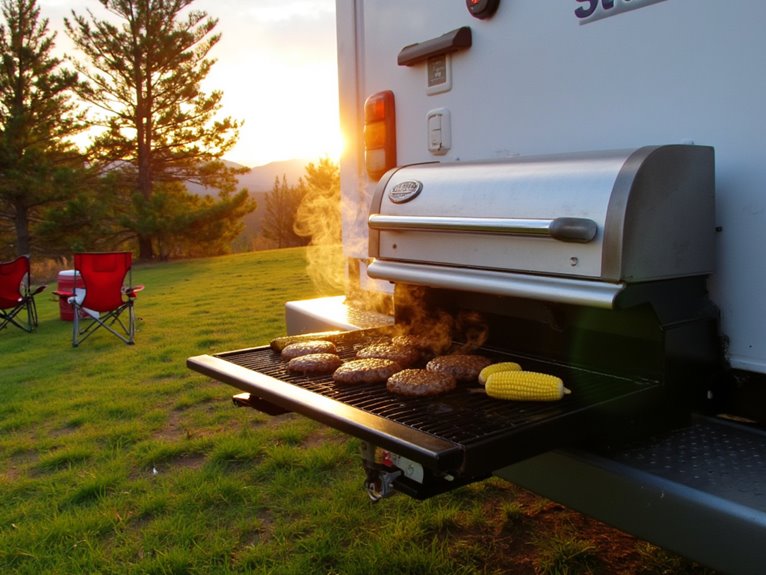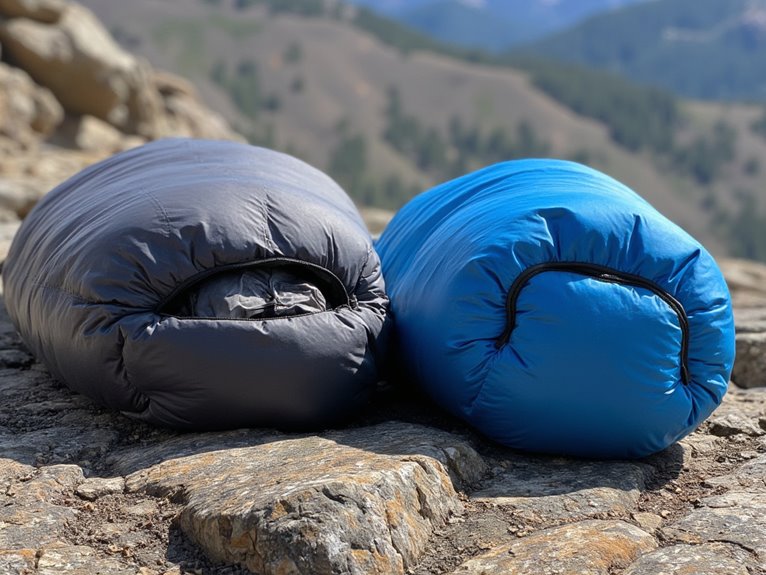Are Snowshoes Safe?
Snowshoes can be a safe and enjoyable winter activity when approached with proper preparation, planning, and awareness of potential hazards. However, they do come with inherent risks such as avalanches, hypothermia, and wildlife encounters that must be acknowledged and mitigated. To guarantee a safe snowshoeing experience, it's essential to check the weather forecast, evaluate your physical abilities, and prepare with necessary gear and equipment. By taking the necessary precautions and understanding the terrain, you can minimize risks and enjoy the many benefits of snowshoeing. Learn how to navigate challenging terrain, prepare for emergencies, and make the most of your winter adventure.
We are supported by our audience. When you purchase through links on our site, we may earn an affiliate commission, at no extra cost for you. Learn more. Last update on 16th January 2026 / Images from Amazon Product Advertising API.
Understanding Snowshoeing Risks
Understanding Snowshoeing Risks
Identifying potential hazards and understanding the inherent risks associated with snowshoeing is essential for a safe and enjoyable winter adventure.
Snowshoeing, like any outdoor activity, carries risks that can be mitigated with knowledge and preparation.
One of the most significant risks is avalanches, which can be triggered by the weight of snowshoes and the collapse of snow bridges.
Hypothermia and frostbite are also potential risks, especially in extreme cold and wet conditions.
Additionally, snowshoers may encounter steep terrain, inclement weather, and wildlife encounters, which can pose a threat to safety.
Preparing for Safe Snowshoeing
To guarantee a safe and enjoyable snowshoeing experience, it is essential to prepare thoroughly by checking the weather forecast, evaluating your physical abilities, and assembling the necessary gear and equipment.
This preparation is indispensable to having a fun and incident-free adventure.
Start by checking the weather forecast to confirm you're not venturing out into harsh conditions.
Next, honestly assess your physical abilities and choose trails that suit your fitness level.
It's also essential to research the terrain, understanding the difficulties and challenges you may face.
By taking these steps, you'll be well-prepared for a successful and enjoyable snowshoeing experience.
Essential Safety Gear Checklist
Your snowshoeing safety kit should always include a few essential items that can help prevent or respond to emergencies, including a first aid kit, navigation tools, and a means of communication. Having the right gear can make all the difference in case of an accident or unexpected situation.
A first aid kit with supplies for treating cuts, scrapes, and broken bones should be included in your kit.
A compass and map can help navigate through unfamiliar terrain.
A portable charger for your phone or GPS device is essential in case your devices run out of battery.
A whistle or other signaling device can be used to call for help in case of emergency.
Extra layers of clothing, including a hat and gloves, should be packed in case of hypothermia.
When venturing into the snowy wilderness, traversing difficult terrain is an inevitable challenge that requires careful planning and attention to detail.
In this section, we'll delve into the essential skills and strategies for tackling steep slopes, treacherous trail conditions, and icy or rocky surfaces, ensuring a safe and enjoyable snowshoeing experience.
Most snowshoers will eventually encounter steep slopes, where the risk of sliding, falling, or getting stuck is heightened, and tackling these challenging terrains requires a combination of skill, strategy, and the right techniques.
To navigate steep slopes safely, consider the following:
- Assess the slope: Evaluate the slope's angle, snow conditions, and potential hazards before attempting to traverse it.
- Choose the right gear: Select snowshoes with aggressive crampons and a comfortable, stable design.
- Use proper body positioning: Keep your weight centered, knees slightly bent, and poles in the correct position.
- Take small steps: Divide the slope into manageable sections, taking small steps and maintaining a slow, controlled pace.
- Know when to turn back: Be prepared to retreat if the slope feels too risky or you're unsure about proceeding.
Treacherous Trail Conditions
Beyond steep slopes, snowshoers must also contend with treacherous trail conditions, including icy surfaces, deep snow, and hidden obstacles, which can quickly turn a serene winter wonderland into a hazardous environment.
These conditions can make it difficult to maintain traction, increasing the risk of slipping, tripping, or falling.
It's essential to stay alert and aware of your surroundings, scanning the trail ahead for potential hazards.
Take smaller steps, keep your weight centered, and avoid sudden movements to maintain balance.
When encountering deep snow, consider taking a more gradual route or using trekking poles for added stability.
Ice and Rock
Snowshoers must also learn to navigate difficult terrain, including icy patches and rocky outcroppings that can be hidden beneath a layer of snow, requiring a combination of agility, balance, and strategy to overcome.
When encountering ice and rock, it's essential to adjust your pace, footing, and body positioning to maintain control and stability.
Take smaller, more deliberate steps on icy patches to reduce the risk of slipping.
Keep your weight centered over your snowshoes to improve balance.
Use trekking poles to help with balance and stability.
Look for alternative routes that avoid rocky outcroppings or icy patches when possible.
Practice self-arrest techniques, such as rolling or sliding, to regain control if you do slip or fall.
Weather Conditions to Watch
When venturing into the winter wilderness, it's essential to monitor weather conditions closely, as rapidly changing circumstances can quickly turn a pleasant snowshoeing excursion into a perilous situation.
Sudden storms, high winds, and low visibility can disorient even the most experienced snowshoers.
Be aware of temperature fluctuations, as rapid drops can lead to hypothermia.
Monitor wind direction and speed, as strong gusts can make it difficult to stay upright.
Additionally, keep an eye on precipitation levels, as heavy snowfall can reduce visibility and make it challenging to navigate.
Stay informed about local weather forecasts and be prepared to adjust your itinerary accordingly.
Staying Safe in Remote Areas
When venturing into remote areas, it's vital to prioritize safety above all else.
To guarantee a safe and enjoyable snowshoeing experience, it's essential to take proactive measures to mitigate potential risks.
Plan Ahead Properly
Proper planning is essential to a safe and enjoyable snowshoeing experience in remote areas, where access to emergency services may be limited or unavailable.
Before venturing out, it's vital to prepare for the unexpected.
Check the weather forecast and plan accordingly.
Pack extra layers, a first aid kit, and a reliable means of communication.
Bring a map, compass, and GPS device or satellite phone.
Let someone know your itinerary and expected return time.
Consider bringing a buddy or joining a guided group.
Know Your Route
As you prepare to venture into remote areas, it's vital to have a clear understanding of your route to avoid getting lost or stranded.
Familiarize yourself with the terrain, studying topographic maps and satellite images to identify potential hazards and obstacles.
Research local weather patterns, trail conditions, and potential wildlife encounters.
Create a detailed itinerary, including planned routes, rest stops, and emergency meeting points.
Share your route with friends, family, or a park ranger to confirm someone knows your whereabouts.
Consider carrying a GPS device or compass as a backup.
Carry Emergency Supplies
In addition to knowing your route, carrying the right emergency supplies can mean the difference between a temporary setback and a potentially life-threatening situation in remote areas.
When venturing into the wilderness, it's vital to be prepared for unexpected events. A well-stocked emergency kit can help you respond to injuries, navigate through challenging weather conditions, and stay safe until help arrives.
Some essential items to include in your emergency supplies are:
- First aid kit with basic medical supplies
- Extra food, water, and warm beverages
- Navigation tools, such as a compass and map
- Emergency shelter and warmth, like a space blanket and hand warmers
- Multi-tool or pocket knife for various tasks



